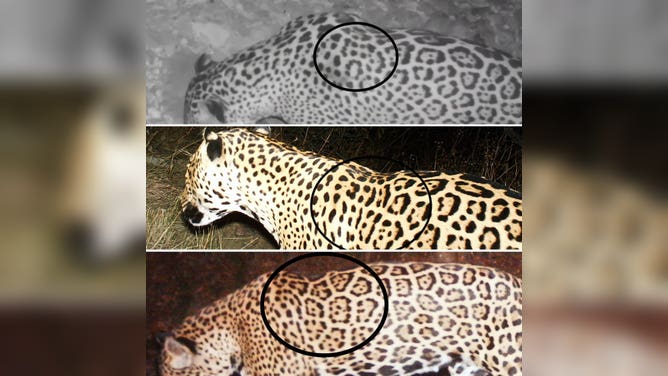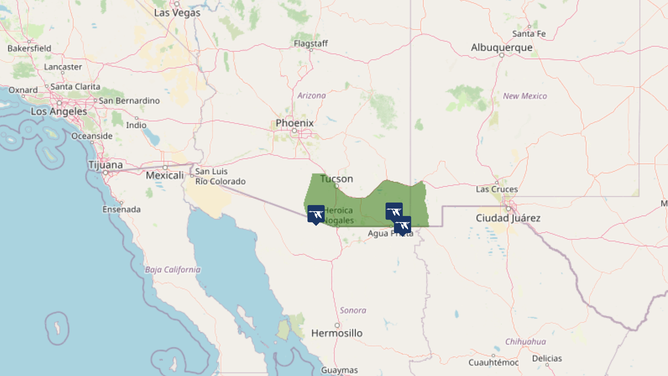Video captures moments jaguar roams wild in Arizona
The U.S. Fish and Wildlife Service estimates there are 173,000 jaguars left in the wild. The big cat is known to live in more than a dozen countries, from North America to South America. The Panthera onca species is the third largest cat in the world, only behind lions and tigers.
Jaguar and other animals spotted on a trail camera in 2017
Video of a wild jaguar and other species in southern Arizona in 2017 (Russ McSpadden / Center for Biological Diversity)
TUSCON, Ariz. – A jaguar spotted by a trail camera in southern Arizona is believed to be the eighth big cat spotted in the last three decades, leaving biologists wondering how many exist in the Southwest.
The Center for Biological Diversity said the jaguar was spotted in December and is not one that has previously been spotted roaming the region along the U.S.-Mexico border.
The center said the rosette pattern on each jaguar is unique and has enabled its experts to determine that there are at least three big cats roaming the rural region.
"Every new jaguar in Arizona is a moment to celebrate," Russ McSpadden, a Southwest conservation advocate at the Center for Biological Diversity, said in a statement. "After being nearly wiped out these majestic felines continue to reestablish previously occupied territory despite border wall construction, new mines and other threats to their habitat. We’re extremely lucky to live near such magnificent creatures, and we’ve got to do everything we can to protect our shared landscape."

The rosette pattern on each animal is unique, which means three different jaguars have been spotted over the last several years in Arizona.
(Center for Biological Diversity / FOX Weather)
FLORIDA IDENTIFIES NEXT INVASIVE SPECIES THREAT
Jaguars are native to the Americas, and according to the center, the U.S. government’s policy in the early 1900s to eradicate the species over livestock concerns led to the population’s downfall.
The most recent sighting is at least the fourth spotted jaguar during the past eight years, with others photographed in the Santa Rita Mountains southeast of Tucson, the Pascua Yaqui reservation southwest of Tuscon and the Dos Cabezas Mountains near the Arizona-New Mexico border.
Biologists said little is known about the most recently spotted cat as the species can remain elusive in the rural region.
"Whether male or female, this new jaguar is going to need a mate. Now is the time for us to have a serious conversation and take action to bring jaguars back," said Megan Southern, jaguar recovery coordinator with The Rewilding Institute. "This new cat is just one of the many jaguars who should be roaming Arizona and New Mexico in a healthy population."

Map of jaguar population in the Southwest U.S.
(U.S. Fish and Wildlife Service / FOX Weather)
RARE FLAMINGO SIGHTINGS ACROSS US LIKELY A RESULT OF IMPACTS FROM HURRICANE IDALIA, EXPERTS SAY
Environmental groups, including the Center for Biological Diversity, have long advocated for the U.S. Fish and Wildlife Service to reintroduce the species back into the Southwest.
They believe the wilderness could immediately support a population of at least 100 jaguars without negatively impacting other animal species, including humans.
The USFWS estimates there are 173,000 jaguars left in the wild, with many clustered in countries of Central and South America.
